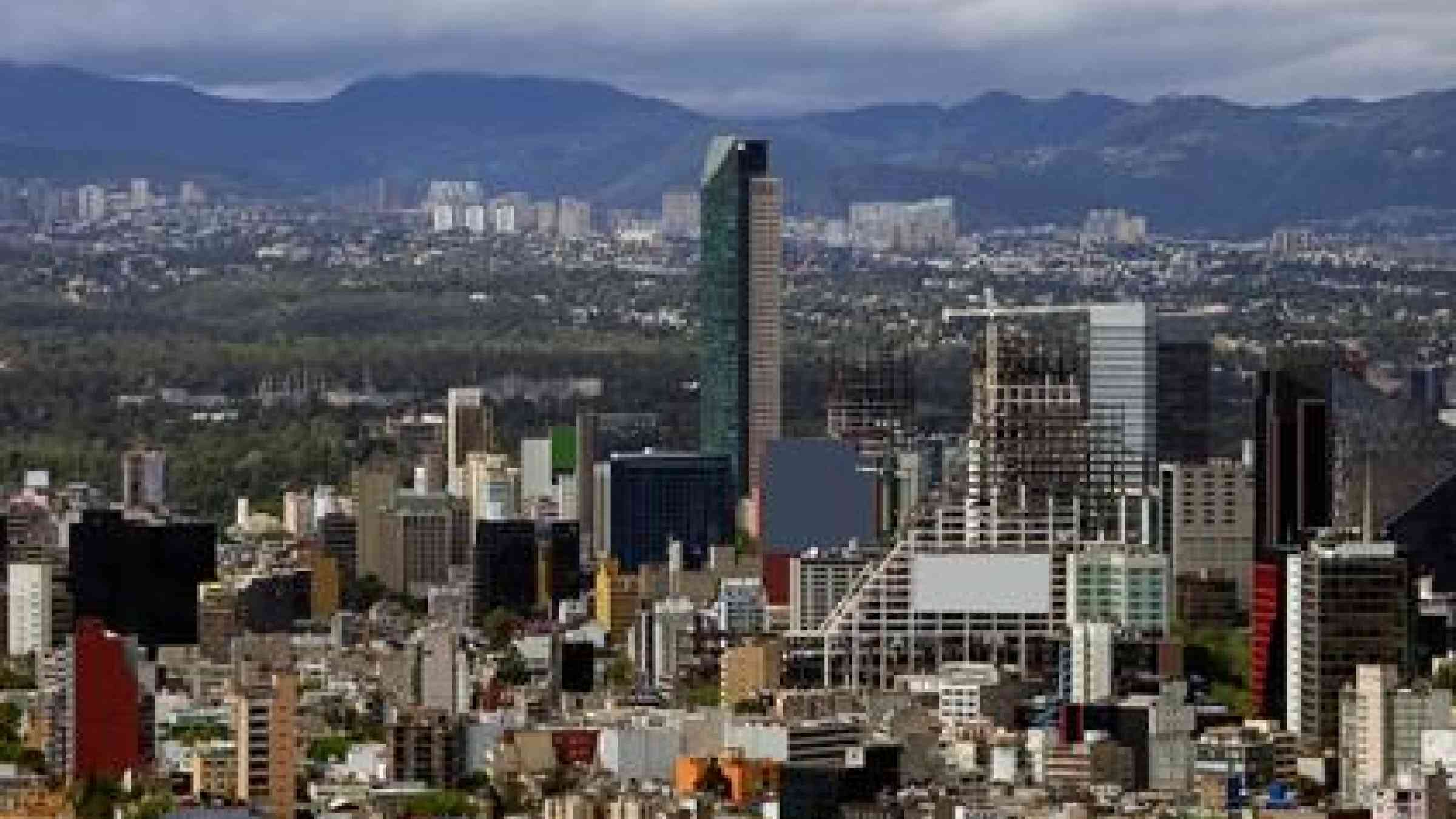Mexico City brings some good news to COP17

DURBAN, 8 December 2011 - While good news remains in short supply from the main climate change talks here in Durban, there is a growing sense that local government is taking the lead on mitigation and adaptation without waiting for their central governments to direct their efforts.
The World Green Building Council has just awarded Mexico City the prestigious Local Climate Action Leadership Award for its Climate Action Plan (CAP) as well as its global leadership on the Mexico City Pact also known as the Global Cities Covenant on Climate which has been signed by 147 cities committed to fighting global warming through a range of strategies.
The CAP was developed under the city’s dynamic Mayor Marcelo Ebrard. The city’s $1 billion package of environmental measures implemented over the last three years is designed to take seven million tons of carbon dioxide (CO2) out of the atmosphere of Mexico City which was once renowned as the most polluted mega-city on the face of the earth. Mexico City has a population of 9 million and an estimated 22 million people live in the entire metropolitan area.
In Durban for the COP17 talks, Martha Delgado Peralta, Secretary of the Environment for Mexico City Government, told UNISDR: “About 70 percent of that reduction is because of the transport revolution which the Mayor imposed on Mexico City. He extended the Bus Rapid Transit Corridors, built another 24 kms of metro line, and he encouraged the replacement of the old fleet of 90,000 taxis.”
The transport sector is now using only clean fuel technology – a combination of clean diesel without sulphur and electric hybrids - making an enormous contribution to improving the quality of air in the city and the health of its citizens.
Mexico City produces 13,000 tons of waste per day and since May 2010 it has been recuperating 3,000 tons of organic waste every day and using it for compost. Plans are in place for even better results.
It has also stimulated people’s enthusiasm for travelling by bike around the city’s crowded streets. Currently its ECOBICI scheme has 90 stations equipped with 1,200 bikes. The scheme is now being expanded and the goal is to have 4,000 bikes at 270 stations with 65,000 registered members paying an annual membership of $30 by May 2013.
“We were the most polluted city in the world. When you realize we are a mega-city with four million cars, 13,000 tons of waste per day, using 32 cubic metres of water per second, then the matter of sustainability is such a challenge. We passed through a crisis of traffic and mobility; crisis makes cities change and we looked at how to take advantage of the concentration of services to be more efficient,” said Calderon.
The CAP is a collaborative effort between many governmental and private institutions that includes a total of 44 specific actions focused on energy and water savings, transportation, waste management and reforestation. Those related specifically to buildings include: the Sustainable Housing Program, which targets whole buildings, and will benefit 32,500 dwellings by integrating green building criteria such as solar collectors, energy and water saving systems, waste water treatment plants, and absorption wells in new multifamily housing.
The Efficient Home Lighting Program, which exclusively targets lighting in existing buildings, will distribute 10 million compact fluorescent lamps to replace incandescent light bulbs in existing dwellings, reducing 270,000 tons of CO2 per year.
She stresses: “This is not a Ministry of the Environment plan. There are about 20 different offices involved including urban land use, tourism and other ministries. UNISDR’s Making Cities Resilient Campaign is also great for us because it fits very well with the needs and concerns of Mexico City especially as we plan for climate change.
“We have heat-waves, flooding, forest fires and water shortages in places where we used to have water. Climate change impacts a lot on our economy and the infrastructure must change somehow to handle this new reality. The city has other risks as well including earthquakes. The 1985 earthquake made the whole city aware of the dangers.
“We also have to be on the alert to the threat of pandemics. People take 25 million trips every day on the metro. During the H1N1 crisis the metro was disinfected after completing each route. We won the World Mayor’s Award for our management of this crisis.
“It is not always easy to convince citizens to support these necessary measures because they cost money and can be inconvenient, whether it’s banning old cars from the road for one day per week, or obliging parents to send their children to school on the bus. International recognition for our efforts is important in persuading our own people that we are doing the right thing.”
An award citation from the Mexico Green Building Council states: “Mexico City’s Climate Action Program has successfully advanced the local agenda for a more sustainable built environment. It encompasses innovative policy, offers smart incentives and promotes better practice - setting a meaningful precedent for the whole nation.”